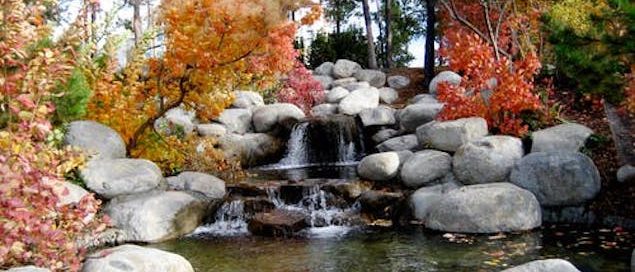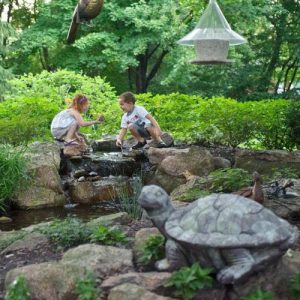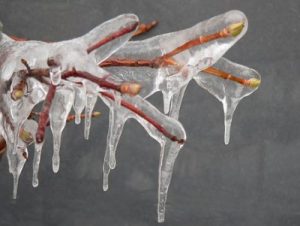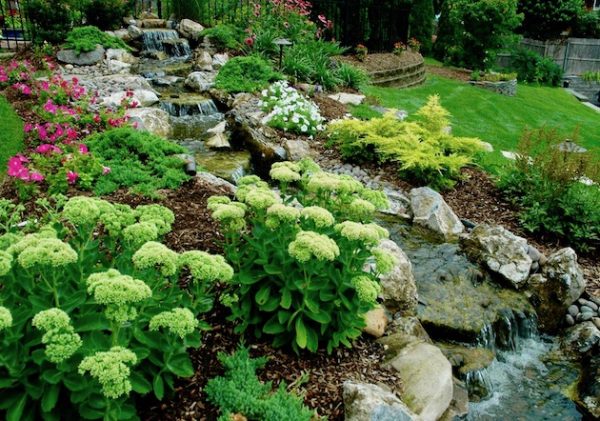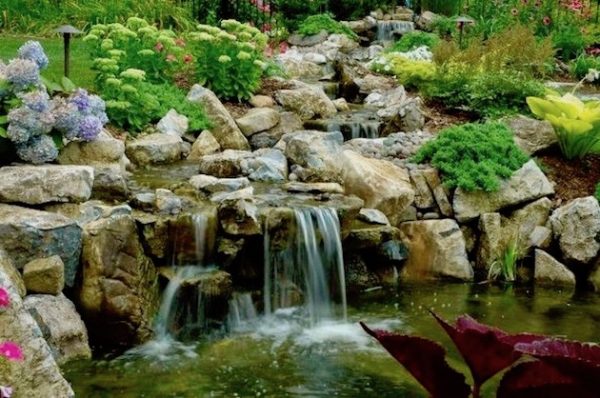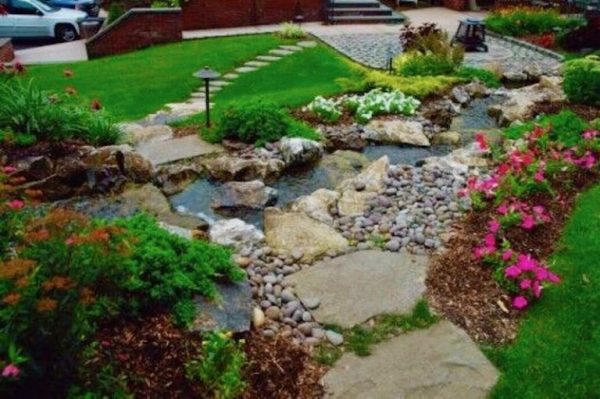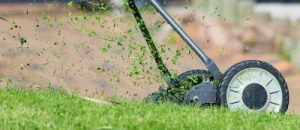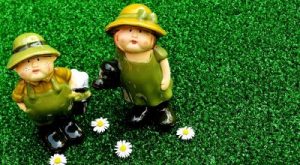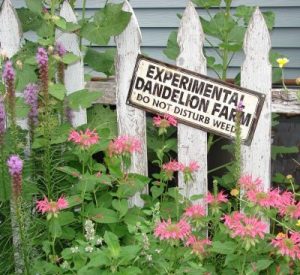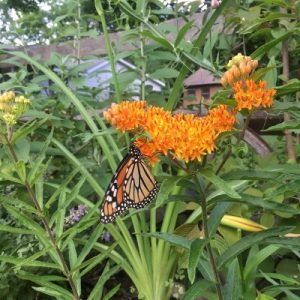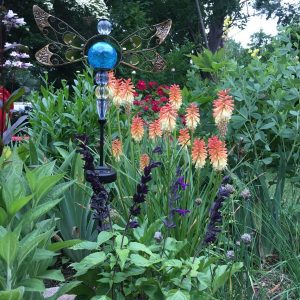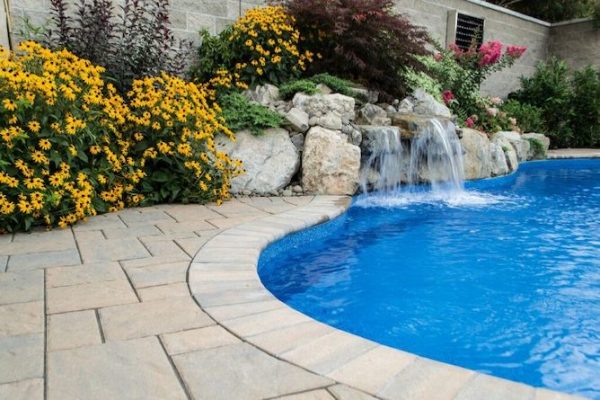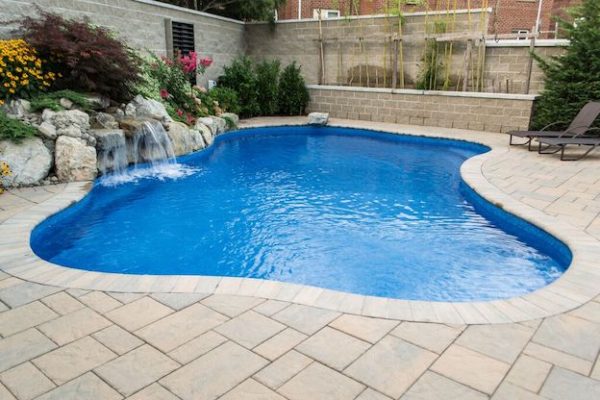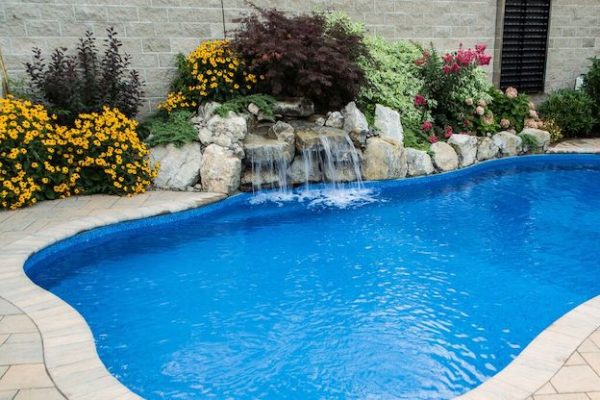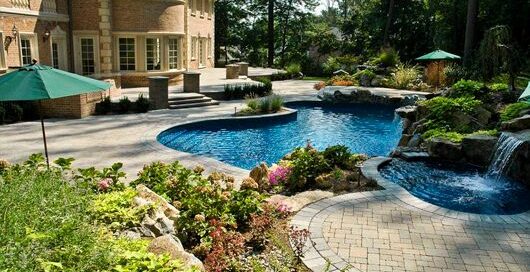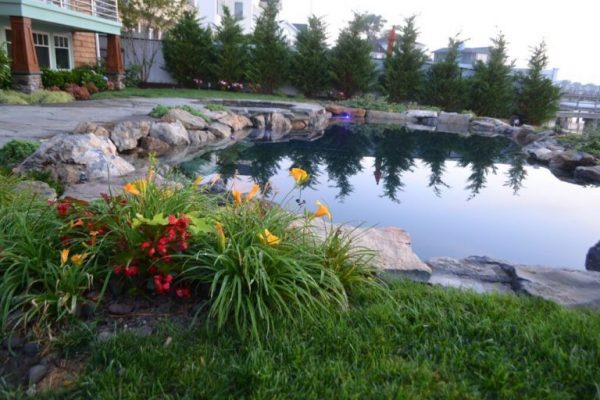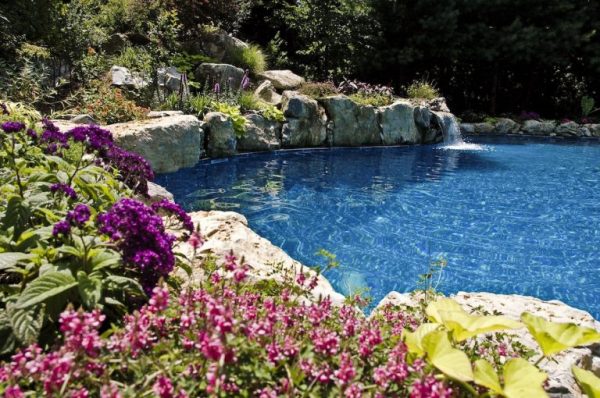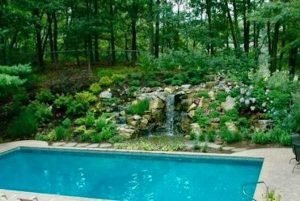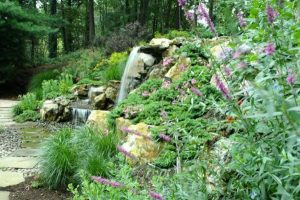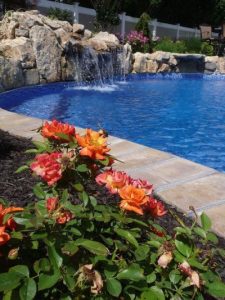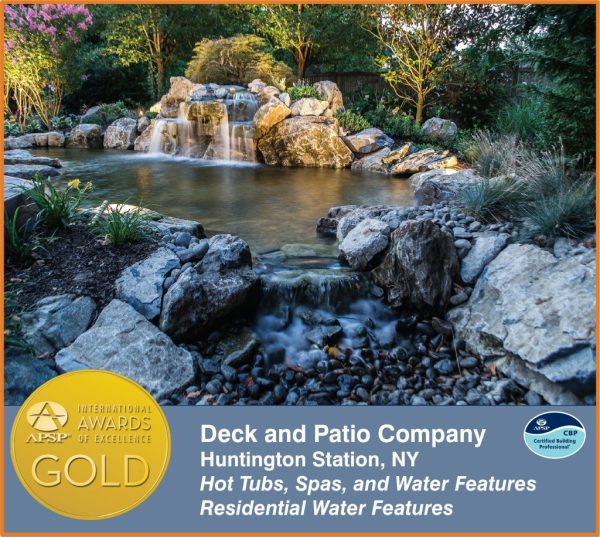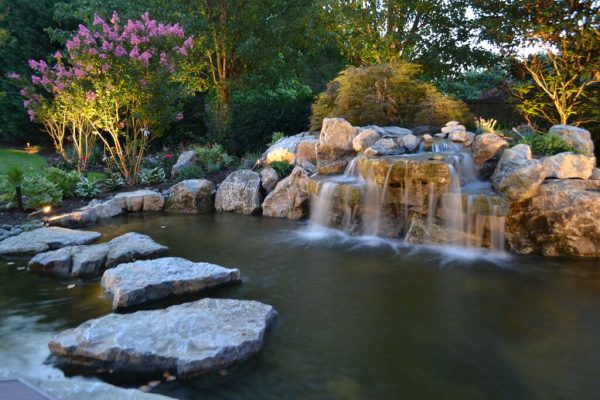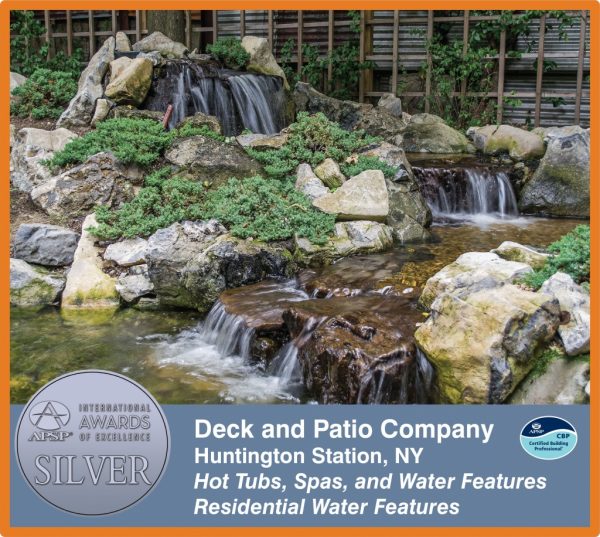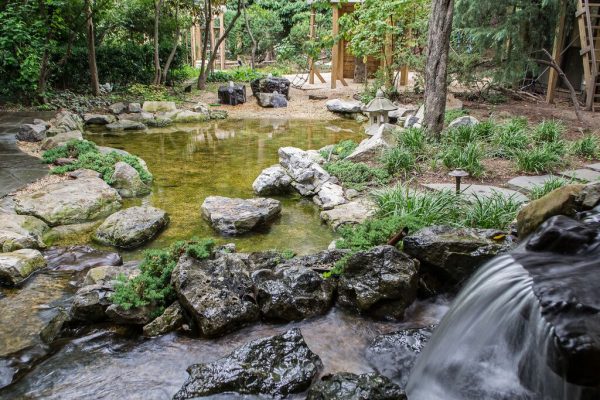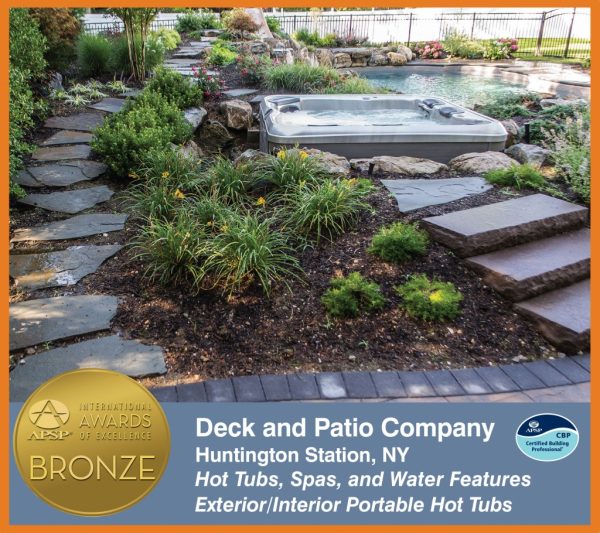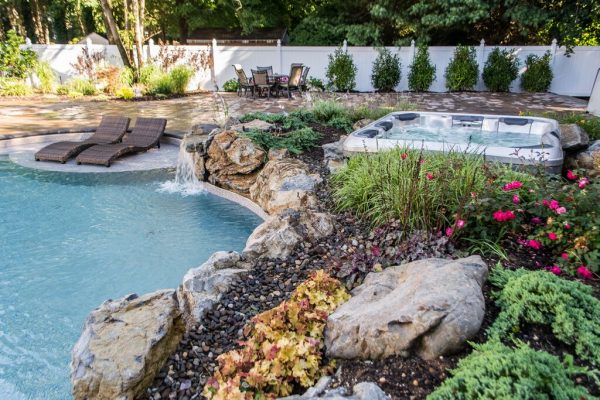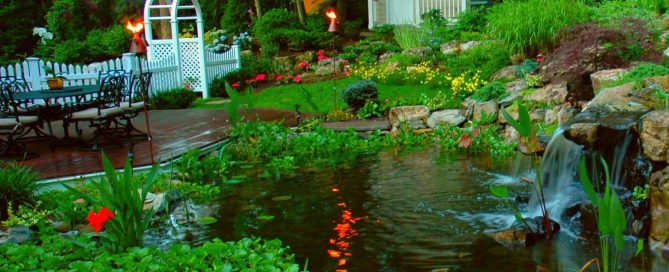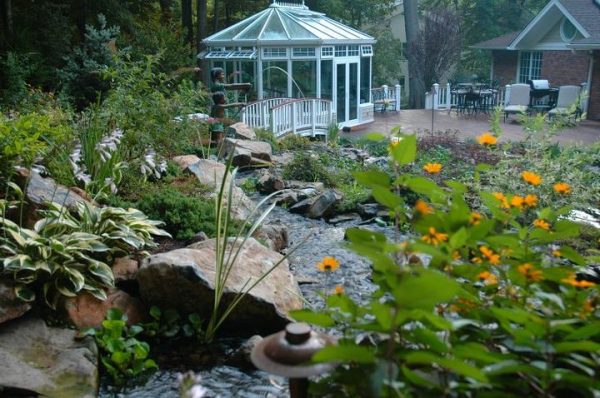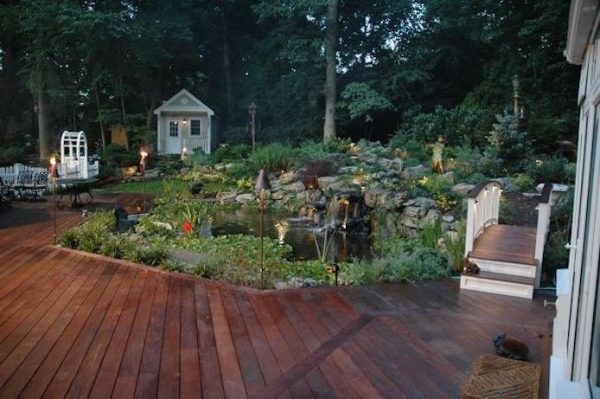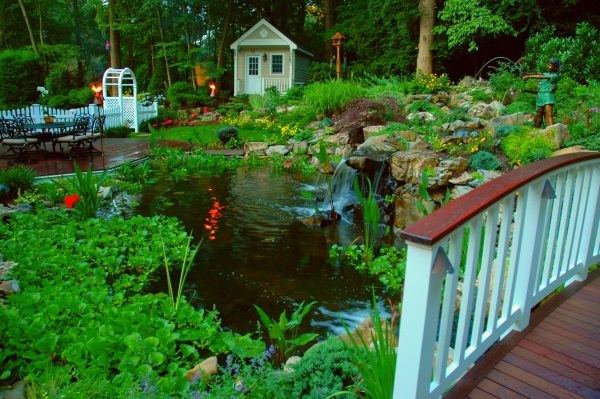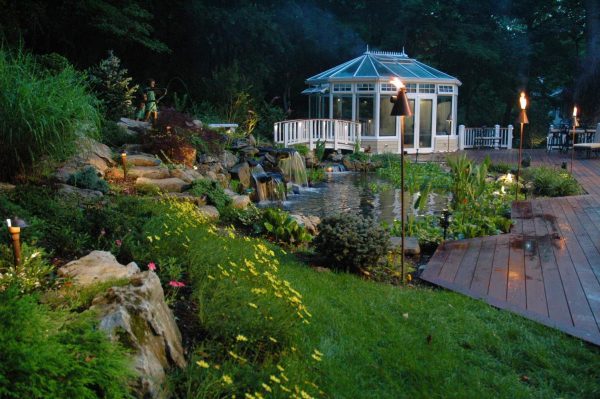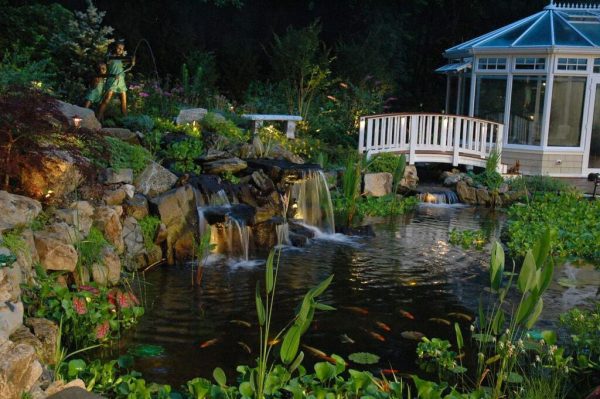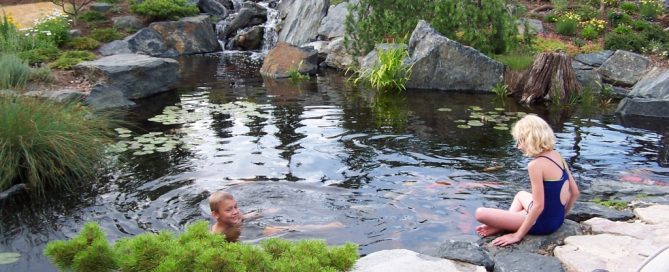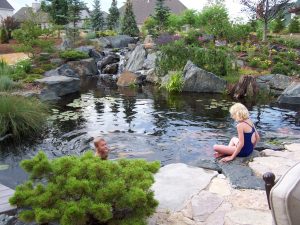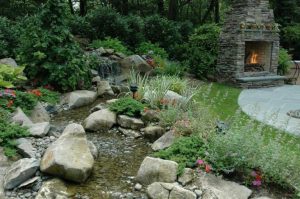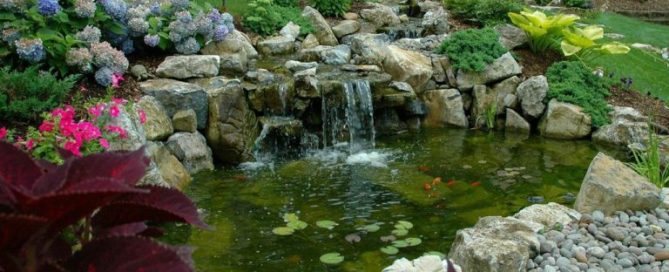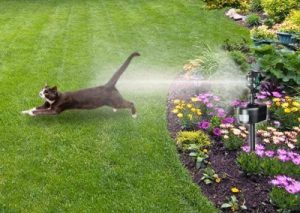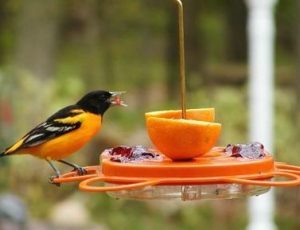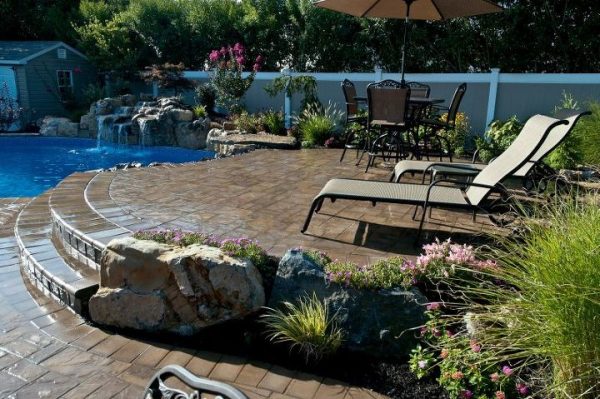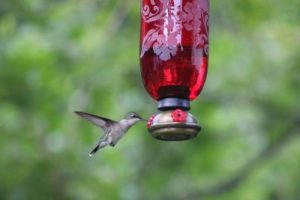Backyard Ponds Offer Multi-Seasonal Enjoyment
It’s pretty well accepted that a child fortunate enough to grow up exploring nature will never lose his/her love for the outdoors.
Even when the weather is chilly, kids and adults alike enjoy studying what’s happening in a pond. And when winter comes, and the koi hibernate, a backyard pond can be great to skate on or stroll alongside on a winter walk.
“Not everyone lives near a large park with streams, or a pond, abundant with flora and fauna, however” says our own Dave Stockwell. “And not every parent is comfortable with letting children stray too far away from home in order to experience this.”
For many Deck and Patio clients (over 300 and counting) the answer has been adding a wildlife refuge (small wildlife that is) on one’s own property.
When a backyard pond with waterfalls is well done, its features can attract lots of interesting and friendly creatures that children love: birds, frogs, salamanders, butterflies.
And, of course, by adding koi and lovely aquatic plants, children and adults can be entertained as well as educated for hours at a time.
Snorkeling at Home in Summer
COVID has kept so many from traveling. Some of those stuck at home miss such vacation delights as snorkeling and seeing the colorful fish of the the Caribbean and elsewhere. But did you know, with your own pond, if it’s built deep enough, you can enjoy that right in your own yard, too. So it’s definitely not just the kids who find endless ways to enjoy the pond in summer.
To give you an idea of the pond experience, here’s a video showing a Cold Spring Harbor, NY, pond that Deck and Patio designed/built. The video captures what’s going on both at ground level and under the pond water.
Ice Skating at Home in Winter
While most water features, particularly ponds, are enjoyed extensively in warm weather, a water feature is actually appreciated during all seasons. And they can even be built during winter’s blasts.
But why not wait for spring to build a pond?
“You’d be surprised what can be built outdoors during the cold months,” adds Dave. Click here for a Deck and Patio water feature built primarily during winter.
Once the pond it built, it takes some prep work and lots of caution and care to make a rink, but according to nationally-recognized “The Pond Guy,” you can turn your pond into a rink for skating.
The Pond Guy has several blogs on this topic covering how to create good ice, what red flags to look for, how to check the ice, and how to create a glassy smooth surface. For two of his blogs, click here and here.
“Or you can just give us a call and we’ll help you through this process,” says Dave.
How About Autumn and Spring?
We’ll be posting on the joys of ponds in spring and autumn soon.
Watch this space.

